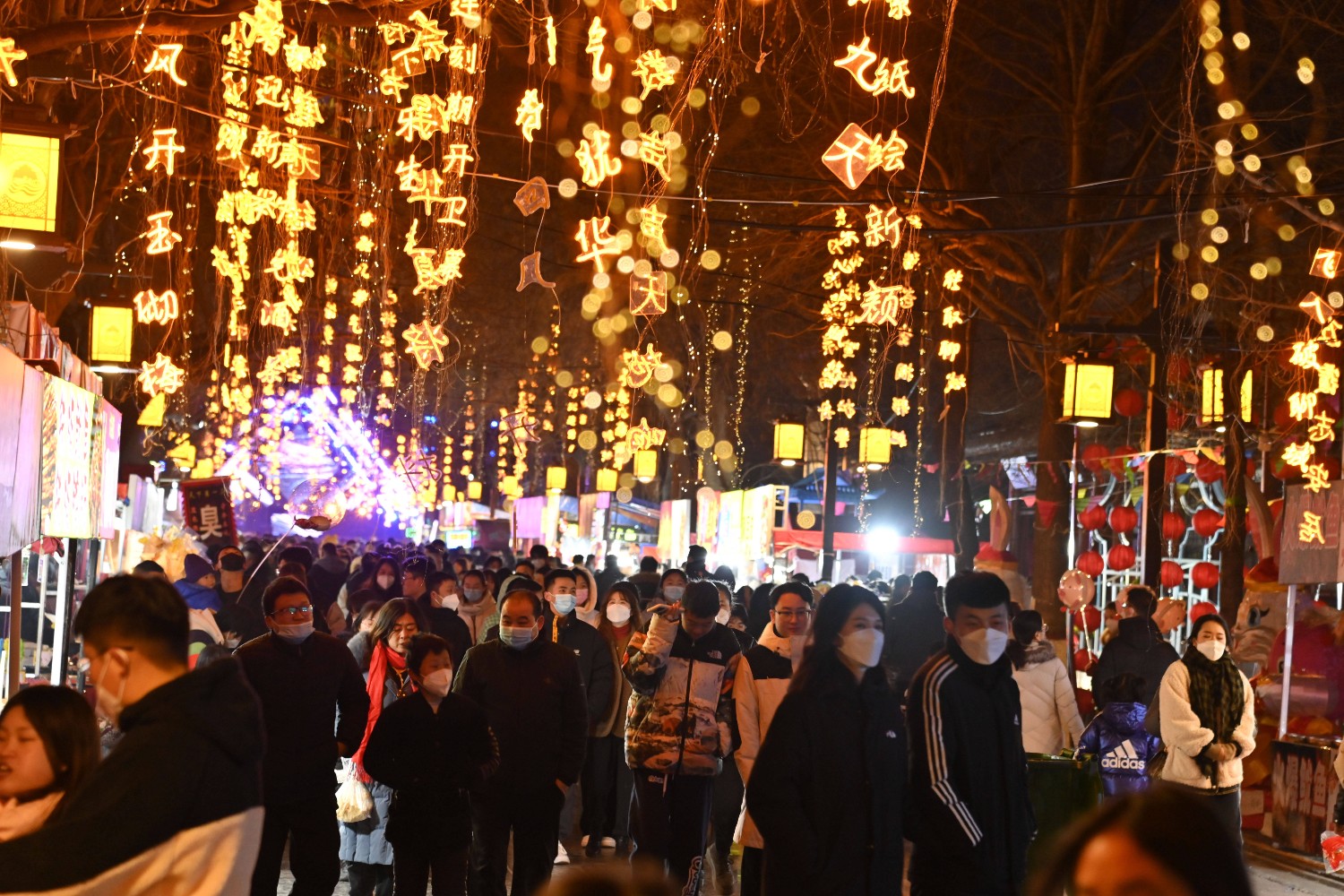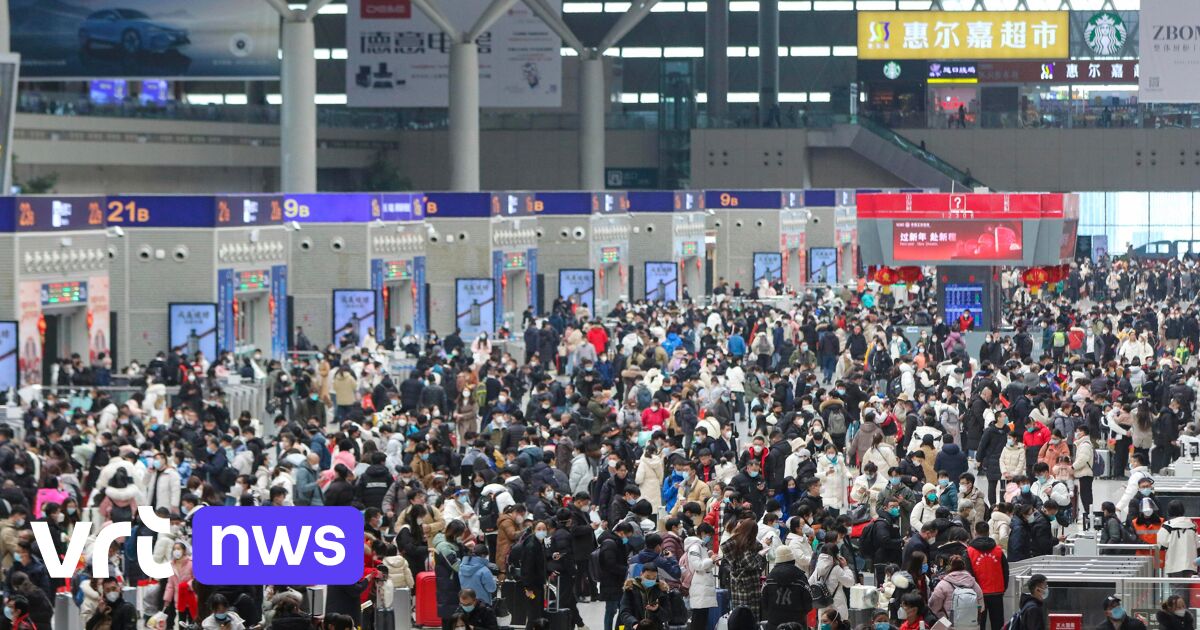According to horoscopes, the year of the Rabbit is synonymous with calm and harmony. Nothing else will be needed after such a tumultuous Year of the Tiger. With tears in his eyes, Hu shows us the photos of his son kept preciously on his mobile phone. Sitting on a big bundle, wrapped in a khaki parka, he is about to board a train for Wuhan. “I haven’t seen my boy for three years, he was just 6 at the time, he explains, holding back his tears. Because of the Covid, I was not allowed to travel, so I’m so happy to be able to go home and celebrate the New Year with the family. » At Beijingxi, one of Beijing’s three train stations, crowds swirl in the vast hall. No need to scan a QR code or present a PCR test, only the mask remains compulsory for travel.
Hu is one of some 30 million “mingongs”, these migrant workers who come from the countryside to work on construction sites in large cities. “We weren’t even allowed to leave our dorm after work, he explains. Sometimes we had to stay locked in our rooms for several days; sometimes you had to work long hours to catch up. I had several salary cuts and for the New Year, we were not even paid bonuses as usual. » Hu lives in a small village a two-hour drive from Wuhan. The city which recorded the first case of Covid at the end of 2019 has turned, like all of China, the page of confinements. “In my village, I don’t really know what the situation is, he worries. I just know that my mother is sick, that’s also why I’m in a hurry to go home, I bring her medicine. »
Risk of renewed epidemic
This spring festival is synonymous with the largest transhumance in the world. More than 2 billion journeys will be made this month in China alone according to the Ministry of Transport’s forecast, twice as many as last year and only 70% of the level of 2019. But this month of festivities could transform the epidemic wave that has hit China since the lifting of health restrictions in early December, like a veritable tsunami, sweeping through all the rural areas where nearly 500 million people live. “Due to this great migration during the holidays, all areas – including the most remote – will be affected, thus prolonging the current epidemic wave”, said Ben Cowling, professor of epidemiology at the University of Hong Kong.
Rarely, in a series of video messages broadcast on Wednesday, President Xi Jinping himself expressed his concern. “I am particularly concerned about rural areas and our farming friends, of whom there are many. The conditions of access to quality medical care in rural areas are relatively limited, epidemic prevention and control measures are difficult to implement there, and the task is therefore difficult., he confessed.
Fears for rural areas
Even in normal times, health services in rural areas are inadequate, with half as many intensive care beds per capita as in urban centers, and a severe shortage of staff. Although officially the rural population is younger on average, in practice young people like Hu work in the big cities, leaving behind villages full of old people and young children. This population is under-vaccinated, partly because many live in hard-to-reach areas and partly because of vaccine skepticism. She is therefore much more at risk of dying from Covid-19.
“
Cases could peak at 4.8 million a day
“
According to a study by Peking University, some 900 million people had been infected with the virus by January 11, or 64% of the population. Proof that the subject is sensitive, this study has been removed from websites. UK analytics firm Airfinity has updated its forecasts of cases and deaths due to holiday travel. “Our analytical indicators suggest that the virus has spread faster in rural areas, in part due to people traveling for Chinese New Year celebrations”, she wrote in her latest report. According to her, the number of deaths could increase from 25,000 per day to 36,000 per day by January 26! “According to our projections, cases could reach a peak of 4.8 million per day with 62 million infections expected over a fortnight – from January 13 to 27 – before starting to decline. »
Far from official speeches
This murderous wave could delay the hopes of reviving the rural economy, one of the priorities of the communist regime. In his speech on December 24, Xi Jinping again called on young people to revitalize the countryside. Until the 1990s, the government could forcibly send teachers, nurses and doctors to remote areas. But with a record unemployment rate among young urbanites of 20% this year, the countryside no longer attracts anyone and the Covid risks leaving them permanently on the sidelines of the Chinese economic miracle.
A far cry from the optimistic speeches this week by Vice Premier Liu He at the World Economic Forum in Davos: “The speed at which the peak was reached and the speed at which it returned to normal was relatively quick, somewhat exceeding our expectations. » Two months before the annual meetings of the Chinese Parliament, which traditionally mark the political return to school in March, the government will first want to focus on the recovery. Xi Jinping will officially begin his third term in March with a new political bureau, a new prime minister and a reshuffled government. Stimulus programs are planned, major works policies, cleaning up of the real estate sector and support for consumption, and many analysts are already counting on a strong comeback of the Chinese economy from the second quarter. “We expect consumption to rebound, especially after this Covid wave passes, thanks to the release of excess savings and the improvement in the labor market”, said Wang Tao, chief economist for China at UBS bank.


